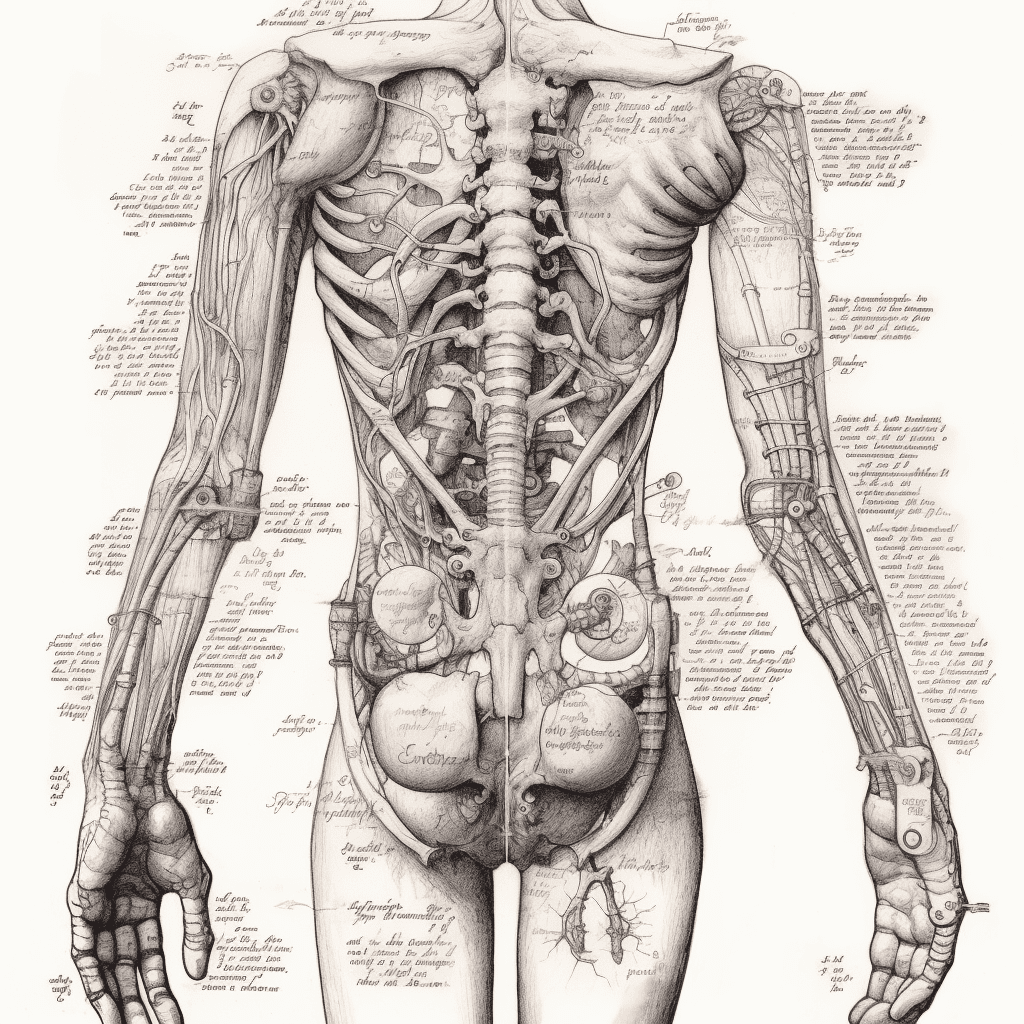Cervix Position: Anatomy and Measurement
 9 months ago
By John Lewis Elopre
9 months ago
By John Lewis Elopre

The cervix is a crucial component of the female reproductive system, often referred to as the “neck of the womb.” Understanding the cervix’s position and anatomy is essential for women’s health, menstrual cycle tracking, fertility awareness, and overall well-being. In this article, we’ll dive into the intricacies of cervix anatomy and the methods used for its measurement.
Cervix Position
The cervix, a cylindrical structure located at the lower end of the uterus, connects the uterus to the vagina. Its position varies throughout a woman’s menstrual cycle and can provide valuable insights into fertility and reproductive health.
Anatomy of the Cervix
The cervix consists of two main parts: the ectocervix and the endocervix. The ectocervix is the visible part that protrudes into the vagina, while the endocervix extends into the uterus. The opening of the cervix is known as the external os, and it allows menstrual blood to flow out and sperm to enter during ovulation.
Importance of Cervical Position
Monitoring the cervix’s position is crucial for tracking ovulation, determining the fertile window, and practicing fertility awareness. By observing changes in its height, firmness, and openness, individuals can identify their most fertile days and increase the chances of conception.
Factors Affecting Cervical Position
Several factors can influence the cervix’s position, including hormonal changes, age, pregnancy, and medical conditions. Understanding these factors can provide insights into reproductive health.
Tracking Cervical Position for Fertility Awareness
Fertility awareness involves tracking various signs, including cervical mucus and position, to predict ovulation. By consistently monitoring these signs, individuals can make informed decisions about intercourse and contraception.
Methods of Cervical Measurement
Measuring the cervix’s position involves reaching into the vagina to assess its height, firmness, and opening. This can be done using clean hands or specialized tools called cervical position indicators.
Cervix Position Throughout the Menstrual Cycle
The cervix goes through distinct changes during the menstrual cycle. After menstruation, it starts low and feels firm, gradually rising and softening as ovulation approaches. After ovulation, it returns to a lower position.
Influence of Pregnancy on Cervical Position
During pregnancy, the cervix forms a protective barrier between the uterus and the vagina. It remains tightly closed to prevent infections and support the growing fetus.
Common Variations in Cervical Position
Cervical positions can vary from person to person. Some have cervixes that sit naturally higher or lower, which is entirely normal. It’s essential to understand your own body’s patterns.
Maintaining Cervical Health
Practicing safe sex, regular gynecological check-ups, and avoiding harmful habits like smoking are crucial for maintaining cervical health and reducing the risk of cervical abnormalities.
Cervical Abnormalities and Their Detection
Cervical abnormalities, such as dysplasia or HPV infections, can be detected through Pap smears and HPV tests. Early detection and proper medical guidance are essential for effective management.
Consulting a Healthcare Professional
If you have concerns about your cervical health, it’s advisable to consult a healthcare professional. They can provide accurate assessments, guidance, and necessary medical interventions.
Myths and Misconceptions about Cervix Position
There are various myths about cervix position and its relation to fertility. Dispelling these myths can lead to better understanding and informed decision-making.
Key Takeaways
The cervix’s position is a dynamic indicator of a woman’s reproductive health. By learning to interpret its changes, individuals can empower themselves with valuable knowledge about their fertility and overall well-being.
FAQs
- Does cervix position change during pregnancy? Yes, the cervix undergoes significant changes during pregnancy to provide essential support and protection to the developing fetus.
- Can I measure my cervix’s position on my own? Yes, with proper hygiene and guidance, you can learn to measure your cervix’s position. However, it’s recommended to consult a healthcare professional if you’re unsure.
- Is a high or low cervix better for fertility? Neither position is inherently better for fertility. What’s essential is understanding your body’s patterns and using that knowledge to predict ovulation.
- Can cervical abnormalities be treated? Yes, many cervical abnormalities can be treated, especially when detected early. Treatment options may include monitoring, minor procedures, or surgery.
- How often should I track my cervix’s position? Tracking can be done daily during the fertile window, typically from the end of menstruation to ovulation. Regular tracking helps identify patterns.

Navigating the Complex World of Global Regulatory Affairs in Oncology
In today's fast-paced global pharmaceutical landscape, the regulatory affairs sector plays a pivotal role in ensuring the safety, efficacy, and market access of oncology drugs. As the demand for innovative cancer therapies continues to grow, understanding the intricacies of global...
8 months agoNavigating the Complex World of Global Regulatory Affairs in Oncology
In today's fast-paced global pharmaceutical landscape, the regulatory affairs sector plays a pivotal role in ensuring the safety, efficacy, and market access of oncology drugs. As the demand for innovative cancer therapies continues to grow, understanding the intricacies of global...
8 months ago
The Vital Role of Institutional Review Boards (IRBs) in Oncology Research
In the world of medical research, ethics play a paramount role. Researchers, especially in fields like oncology, are constantly striving to find innovative solutions and treatments to combat cancer. However, these advancements must be achieved within the boundaries of ethical...
8 months agoThe Vital Role of Institutional Review Boards (IRBs) in Oncology Research
In the world of medical research, ethics play a paramount role. Researchers, especially in fields like oncology, are constantly striving to find innovative solutions and treatments to combat cancer. However, these advancements must be achieved within the boundaries of ethical...
8 months ago
Data Privacy and Security in Oncology Trials
In today's digital age, data privacy and security have become paramount concerns across various industries, including healthcare. Within the realm of clinical research, particularly in oncology trials, safeguarding patient data is of utmost importance. This article delves into the critical...
8 months agoData Privacy and Security in Oncology Trials
In today's digital age, data privacy and security have become paramount concerns across various industries, including healthcare. Within the realm of clinical research, particularly in oncology trials, safeguarding patient data is of utmost importance. This article delves into the critical...
8 months ago